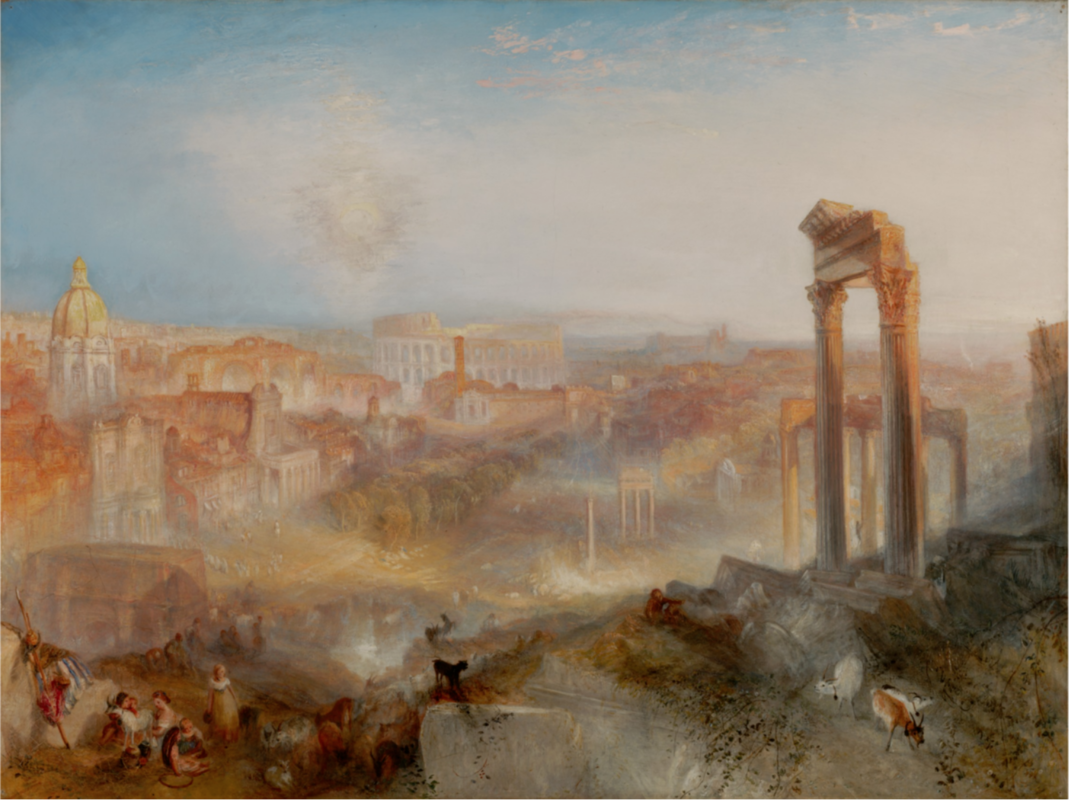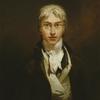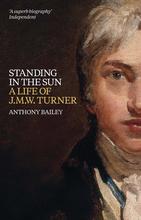More about Modern Rome - Campo Vaccino
- All
- Info
- Shop

Sr. Contributor
Lots of Turner paintings have to be restored when they enter museum’s collections, but not Modern Rome – Campo Vaccino.
No, this special gem by the English great hasn’t been retouched since the painting left the artist’s hands in 1839, and it’s still even in its original frame. Having only been owned by two families since then helped it remain in pristine condition. The money the institution saved on restoration costs must have helped even out its high purchase cost. The Getty had to shell out $44.9 million to buy this painting in 2010, breaking a record for the highest amount paid for a Turner at auction. The Getty is no stranger to paying these lofty sticker prices, though. In 2014, the Getty broke another record by purchasing Édouard Manet’s Spring for $65.1 million – the highest amount ever paid for a painting by this artist as well. Dollar dollar bill, y’all.
Turner is one coveted artist. I guess that’s what happens when you’re known as one of the early forerunners of abstraction. During his time, the English people liked to see naturalistic depictions, of which John Constable was king. Unlike Constable’s boring depictions of the English countryside, Turner felt free to fudge some details, which helped him to achieve the overall luminosity that made him so famous. Turner wasn’t afraid to take artistic liberties, but he definitely wasn’t as bad as other artists who created paintings totally full of lies. Looking at you, Leutze. The public liked what Turner was doing, so John Ruskin must not have gotten this memo when he later sued James McNeill Whistler in 1877, an artist who breached abstraction even more than Turner did, for creating “fake art.”
Rome, both ancient and modern, was Turner’s jam, and he was by no means alone in this obsession with Rome. The love for all things antiquity began in the Renaissance and continued through the nineteenth century. Turner’s seemingly endless repertoire of images of Rome transport you to a special time and place that the artist remembered so fondly from his travels. Although Turner didn’t get the chance to travel to Rome until the ripe old age of 44, he couldn’t get the Eternal City off of his mind for up to a decade after his final trip, when he painted this particular view of the city.
As Turner got older, he stopped painting imagined scenes of ancient Rome and began to focus on his personal memories. This painting focuses on the splendor of the modern city, which is why there are, disappointingly, no longer any cows grazing in the part of Rome called “the cow pasture.”
Sources
- Barker, Elizabeth E. “Joseph Mallord William Turner (1775-1851).” The Heilbrunn Timeline of Art History. The Metropolitan Museum of Art. October 2004. http://www.metmuseum.org/toah/hd/trnr/hd_trnr.htm. Accessed August 23, 2017.
- Davies, Penelope J. E., Frima Fox Hofrichter, Joseph Jacobs, Ann M. Roberts, and David L. Simon. Janson’s Basic History of Western Art. 8th edition. Upper Saddle River, NJ, 2009.
- Floryan, Meg. “Whistler, Nocturne in Black and Gold: The Falling Rocket.” Khan Academy. https://www.khanacademy.org/humanities/art-americas/us-art-19c/civil-wa…. Accessed August 24, 2017.
- Nakano, Craig. “Getty breaks record with $65.1-million purchase of Manet’s ‘Spring.’” Los Angeles Times. November 5, 2014. http://www.latimes.com/entertainment/arts/culture/la-et-cm-getty-manet-…. Accessed August 2
- The J. Paul Getty Trust. Modern Rome – Campo Vaccino. The J. Paul Getty Museum. http://www.getty.edu/art/collection/objects/251762/joseph-mallord-willi…. Accessed August 22, 2017.
- Vogel, Carol. “Getty Buys Turner’s ‘Modern Rome’ for $44.9 Million.” The New York Times. July 7, 2010. http://www.nytimes.com/2010/07/08/arts/design/08arts-GETTYBUYSTUR_BRF.h…. Accessed August 23, 2017.
Featured Content
Here is what Wikipedia says about Modern Rome – Campo Vaccino
Modern Rome – Campo Vaccino is a landscape by British artist Joseph Mallord William Turner completed in 1839. It is Turner's final painting of Rome and had been in the possession of the family of the 5th Earl of Rosebery since 1878, until the painting came to auction, 7 July 2010. It was bought by the J. Paul Getty Museum, Los Angeles, and was subject to an export bar to allow a British gallery time to attempt to match the Getty's bid.
Check out the full Wikipedia article about Modern Rome – Campo Vaccino













